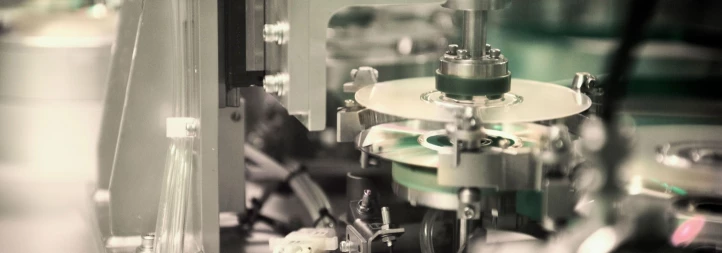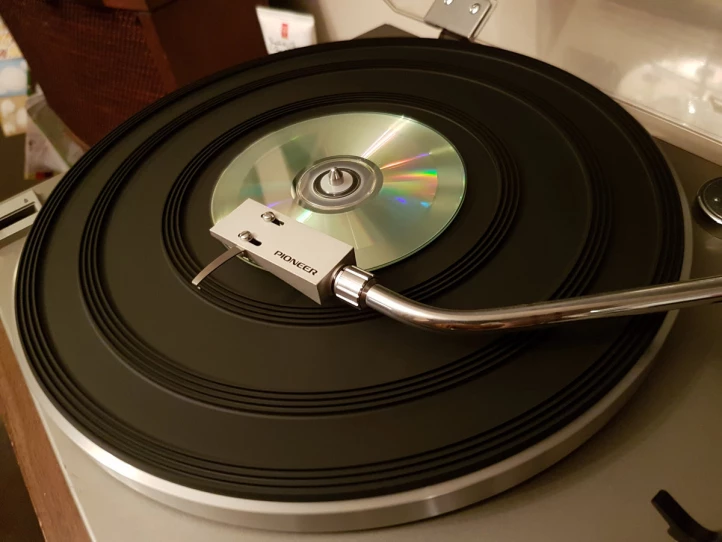The phonograph cylinder is dead, long live the gramophone disc! The gramophone disc is dead, long live the vinyl record! The vinyl record is dead, long live the CD! The CD is dead, long live the mini-disc! The mini-disc died an untimely death, long live the MP3! The MP3 is dead, long live streaming! Streaming isn’t all that, long live the tape cassette revival! Tape ca-what?! No way, mister/sister! Suffice to say, the quest for the perfect means of listening to recorded music has been an infinite one, peppered with lofty, spurious claims at each turn (vinyl will never break! CDs can’t be scratched! Mini-discs are the future!) but the truth, to some, is that we (almost) reached a pinnacle with the now universally-shunned compact disc.

Why the change?
So how did the beleaguered CD become so unfashionable? They last a lifetime; don’t suffer as much as vinyl from jumps, scratches, static and dropouts; are relatively cheap; and, like vinyl, can furnish the listener with sleeve art, reading material and liner notes. Sure, their mass-manufacture is an environmental blot on the landscape but vinyl – made of poly-vinyl chloride – is certainly no eco-angel either. We’re very conscious of the ecological impacts of what we produce for the music industry, and we’ll always aim to go beyond reasonable action to offset our footprint.
The popularity shift, in retrospect, seems to be more a cultural one. From day one, the CD had a sell-by date in the same way that other ephemeral 80s urban fads did. Ostensibly, the compact disc is the pixie boot to vinyl’s Doc Marten. It mirrors an age when everything seemed synthetic and trite. Yuppies played CDs in their Saab convertibles on their commute to the office, whereas record collections were the hallmark of true audiophiles. Record collectors exhibited a nerdy coolness, a real deal bohemia, that unquestionably helped the format float in the pool of cultural acceptance for longer than anyone could have anticipated. Plus let’s be honest, twelve inches feels better to the touch than five inches. Sorry boys, but size, it seems, did matter.
Let’s get technical
Sound quality is, of course, the big sticking point. The naysayers - of which there are a legion - say that the flat, clinical nature of laser-operated discs is the antithesis of high fidelity and, more importantly, the antithesis of vinyl. In tech terms, they’re both right and wrong. The vinyl record relies on an analogue process that mirrors the sound wave of the original recording, whereas the CD takes digital snapshots of that analogue signal at a certain rate. Therefore, a digital recording is not capturing the complete sound wave. It is approximating it with a series of steps. What this means in real terms is that CDs may be missing or distorting tiny elements of the sound signal, although nothing that you or I could ever notice, especially if you spend your nights listening to gabba or Melt Banana. Or pretty much anything else, to be fair.

On the other hand, vinyl is physically limited by the fact that records have to be capable of faithfully reproducing audio without skipping or being distorted in comparison to the master DMM plate or lacquer. When mastering for vinyl, pre-production engineers will often curb extreme high and/or low ends, using techniques that alter the dynamics and physical nature of the audio. The physical limitations of vinyl mean that the original signal is actually flipped before it can be cut to vinyl, so low frequencies become high and high frequencies become low. This signal is then reversed by the phono stage amplifier during playback, not something you’d ever know about unless you’ve accidentally plugged your deck directly into a line-in input and wondered why it sounds all bright and bass-less. Many argue that this process distorts the true intention of the audio, while others counter that it’s partly why vinyl sounds better.
Which leads us onto that mythical ‘warmth’ you hear on vinyl records; for the most part that’s down to vinyl’s capacity for a greater dynamic range, in comparison to your average CD. Stereo bass signals can throw the needle out of the groove, so bass frequencies are always summed to mono before cutting. This, combined with a potential loss of fidelity in the higher frequencies as previously mentioned, also contributes to the illusion of a warmer sound. Aesthetically pleasing, sure, but arguably not what the band were hearing in the control room when they spent precious hours mixing it down.
Back to the future
To bring it back to present day, almost all modern recordings are created on digital software, and it is now commonly believed that major vinyl re-issues are, more often than not, taken from a CD source and not the original master tapes. Once those compressed files are cut to vinyl, you’re not getting an analogue product; you’re getting a digital interpretation of an analogue medium. It’s like watching a HD show on a terrestrial TV and telling people it’s a more authentic experience.
Of course, no-one doubts the lure of vinyl. It’s big, tangible, riven with historical relevance, the quintessential rock’n’roll artefact. But if the argument is centred on sound alone, there are just too many variables to call it. That said, digital recording is certainly more accurate, but one could comfortably argue that the warm tone of a vinyl record serves as an improvement. Going one step further, DVD audio discs and players have been hailed as ‘the future’ of digital playback due to their far superior sample rate – that’s once our honeymoon period with the ultimate convenience that is online streaming is over. So probably never.

To summarise
At the end of the day, it’s essentially all academic and we all know it. People like to argue, from either side of the fence and hopefully this article now gives you a taste of what’s happening in the opposing pastures. The bottom line is that the vast majority of people don’t analyse the sound going into their eardrums. They’re too busy enjoying the song, listening to each of specific sounds and instruments or lyrics, or immersing themselves so entirely in the music that they subconsciously disregard all nuances of playback quality.
Every listener has their own subjective requirements based on the styles of music they listen to, on their environment, on their upbringing, on their age and on their level of discernment. If you grew up without the joys of vinyl records, you’re not going to miss the holistic experience. So, if you still have a CD collection - and a CD player - gathering dust, use them with pride. It’s only a means to an end. Nobody will judge you. Unless you’re listening to Melt Banana, of course.




